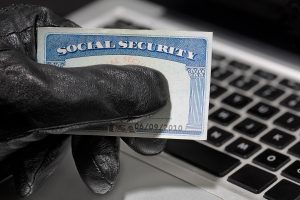Social Security numbers can be likened to the “Golden Ticket” that gets Charlie into Willy Wonka’s Chocolate Factory. Identity thieves love them because these 9-digit numbers can be used to obtain credit cards or other loans, open bank accounts, apply for a job, file and collect fraudulent tax refunds, and receive several different types of Social Security benefits, just to name a few.
While the Social Security Administration (SSA) is best known for its monthly payments to retirees, the agency also runs several other programs including survivor benefits for widows, widowers, and dependents of eligible workers. The goal of the Old-Age, Survivors, and Disability Insurance (OASDI) program is to replace income that is lost due to old age, death of a spouse, or qualifying ex-spouse, or disability. Social Security Disability Insurance (SSDI) is for people with disabilities and Supplemental Security Income (SSI) is designed for aged, blind, and disabled people who have limited income and financial resources. (These programs are favorite targets of fraudsters who enjoy stealing benefits they don’t deserve.)
Some of the most common ways fraudsters are committing Social Security fraud today include:
- Making false statements on a claim.
- Concealing facts or events that affect eligibility for benefits.
- Misusing benefits by a representative payee.
- Failing to notify the agency of a beneficiary’s death while continuing to receive the deceased person’s benefits.
- Buying or selling real or fake Social Security cards or numbers.
- Filing claims under another person’s Social Security Number (SSN).
- Impersonating an SSA employee.
There is no shortage of news on Social Security fraud. Take for example, Fernando Arroyo-Alonso, a 59-year-old Mexican citizen who was sentenced to one year and one day in prison for stealing the identity of a disabled U.S. veteran and using his SSN. Arroyo-Alonso applied for Title XVI Supplemental Security Income benefits and used the veteran’s personal information to obtain an Ohio’s driver’s license. He used the victim’s identity for almost twenty years and racked up quite a criminal record including convictions on drug, gun, and reckless driving charges. (Leaving that poor victim quite the mess to clean up, for sure.)
In a more grotesque case of Social Security fraud, Logansport, Ind., resident Jason Beebout, 44, was sentenced to 13 years in the Indiana Department of Correction for failure to report the death of his mother-in-law, fraud, welfare fraud and burglary. (Police found the decayed body of Cynthia Newman, 65, in her home during a welfare check. Beebout and Newman’s daughter also lived there.) Beebout and his wife made unauthorized transactions from Newman’s bank account and used her Social Security and retirement benefits. (She had been dead for over a year.) It is interesting to note that Beebout burglarized his mother-in-law’s home, as revealed by DNA evidence. (I’ve hear of dysfunctional families before, but this one takes the cake.)
There are many ways to commit Social Security fraud, but the Federal Trade Commission (FTC) reports that 36,273 incidences involving imposter scams occurred in 2021 alone, costing American taxpayers $19.77 million. Scammers love to pretend they are government employees. Sometimes they threaten their victims and demand immediate payment to avoid arrest or legal action. Don’t be fooled.
If you receive a suspicious call, text, or email, there are several things you can do: 1) hang up; 2) don’t return unknown calls, texts, or emails; 3) do not give money or personal information; and, 4) report the scam to the Office of the Inspector General (OIG) through their dedicated online form. The SSA also offers these suggestions for avoiding becoming a victim of Social Security fraud and Identity Theft.




